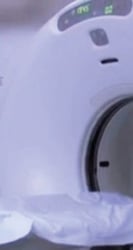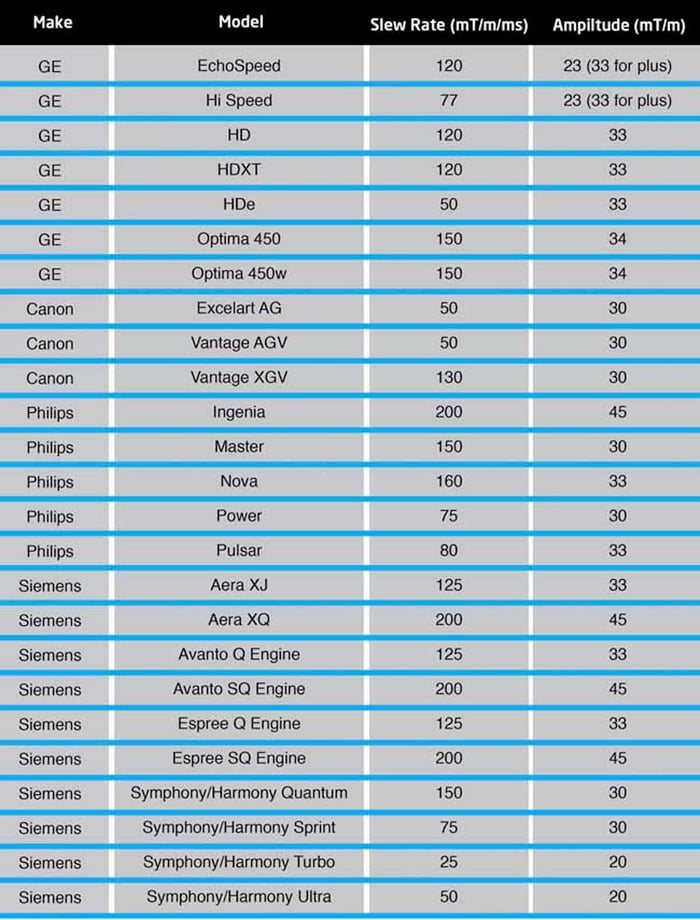Yes, they make a really loud noise. And their magnetic field is actually strong enough to lift a car before modification.  But most importantly, they drive MRI value on the secondary market. So, what do you need to know about 1.5T MRI Gradient Slew Rates?
But most importantly, they drive MRI value on the secondary market. So, what do you need to know about 1.5T MRI Gradient Slew Rates?
A slew rate is the speed at which the gradient reaches its maximum amplitude. It’s also called rise time. It’s measured in millitesla per meter per microsecond or mT/m/ms. The higher the slew rate, the thinner the anatomical slice. That means higher clarity in the image produced.
Aren’t All OEM Gradients The Same?
Nope. Each manufacturer has 3-4 different gradients, and each has their own different names. When comparing these OEM MRI Gradients, it’s best to judge them by their slew rates. Let’s take a look at GE, Siemens, Philips and Canon Gradients and their Slew Rates.

Is The Highest Slew Rate The Best?
Not necessarily. And those are the most expensive, so you’d better be sure it’s what you really need. It’s easier to market a system with a higher Slew Rate on the secondary market. But the cost will be significantly higher. You need to make your decision on the types of studies you’ll be doing on a routine basis. You may not need the highest Slew Rate for your practice, medical facility, hospital or clinic.
How Do You Know Which Is Right For You?
It’s always wise to talk to an expert, like those at Atlantis Worldwide. We’ve been helping medical equipment buyers for more than 25 years. We’re an authority in the complex industry of refurbished and used radiology equipment and are happy to help you determine the equipment that fits your needs perfectly. Our experts can also help you develop your business plan and help you with every aspect of purchasing and implementation. You can check out client testimonials about our expertise here! Contact Us Today!
Some blogs you may have missed:
- Changing the Game: Xbox to X-Ray
- MRI Infographic: Closed Bore, Open MRI & Wide Bore
- Confused About MRI Coils?
- 7 Benefits of Medical Imaging File Sharing
- 3D Printing in Medical Imaging & Healthcare
- Free MRI Resources
Meet the author: Vikki Harmonay




